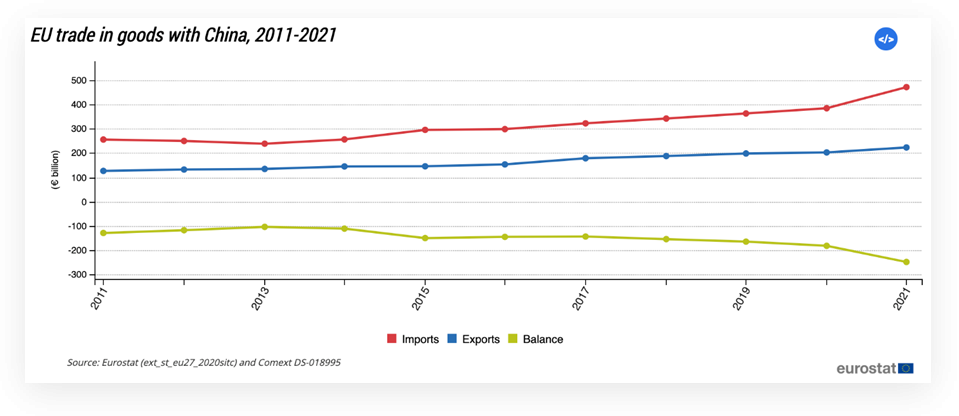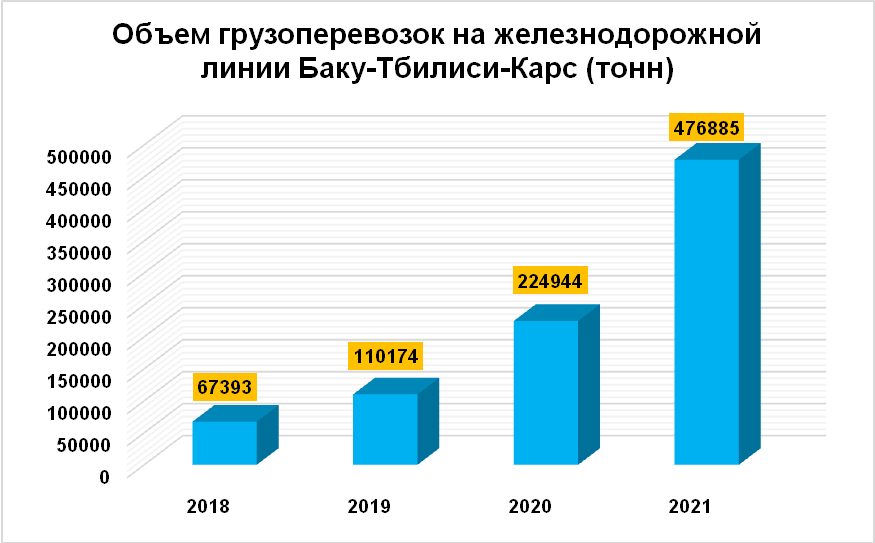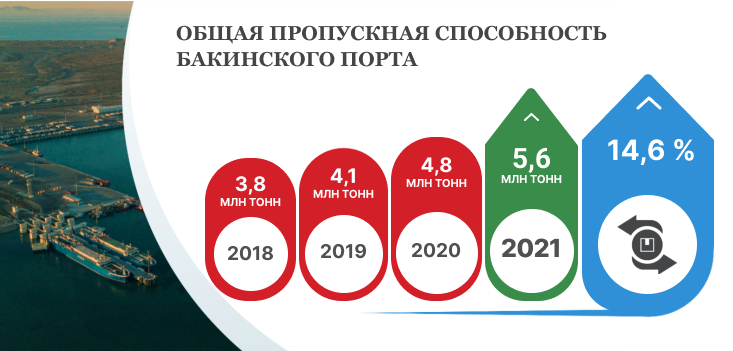Why Middle Corridor?
The conflict between Russia and Ukraine, lasting more than three
months, gave rise to outsized impact which affected almost the
entire world. The global supply chain, which has already been under
stress during the COVID-19 pandemic, has been particularly hard
hit. The Western sanctions imposed on Russia are forcing giant
companies with a worldwide reputation unwilling to conduct
operations through the country’s territory – no one has a desire to
become an outcast. More than ever the world needs to diversify its
trade and transport routes and restructure its logistics flows. As
a result, a growing number of international carriers have announced
rescheduling transit routes in order to maintain competitiveness in
the face of current forces.
Against the backdrop of all that is happening, the China-to-Europe
transportation route, which mainly kept its way through the Russian
territory - about 90 percent of all rail traffic in this direction
- has suffered great damage. For several years, the import of
Chinese goods to Europe has been growing rapidly, the Celestial
Empire has even outstripped the United States as a trading partner
of European countries. Chinese economy has a high dependence on
exports: in the 1990s, export growth averaged 40 percent of total
GDP growth, and in the 2000s, its share increased to almost 60
percent. And it is not in the interests of Beijing to surrender the
leading position of supply chain giant against the background of
the emerging logistical crisis.

Now that global events have weakened the competitiveness of the Northern Corridor and created new opportunities for the East-West route, the interest in the Middle Corridor is increasing and countries have begun to actively contribute to the development of the project. Now, what if the possibility of returning to the old supply chain in the foreseeable future seems hazy, and Russia which territory occupies about 36.2 percent of the Earth's total land area “falls out” of the game? Perhaps the leading exporting countries are asking the same question. The so-called Middle Corridor, which stretches between sanctioned Russia and Iran and runs along the route China - Kazakhstan - Caspian Sea - Azerbaijan - Georgia - Turkey or the Black Sea -Europe, is the most obvious alternative. A positive trend in the development of the route was observed over the course of several years, and increased sharply after the onset of the Russian-Ukrainian crisis. Now, in the face of increased demand, countries began to work more actively to improve the infrastructure of the route and facilitate many customs processes – it all had a positive impact on the figures. In the first four months of this year, 8696 containers passed through the territory of Azerbaijan, which is 130 percent more than in the previous year, and this trend is expected to continue growing. The average volume of both land and sea transport has already increased by 52 percent.

All participants in the Middle Corridor have their own reasons and
interests in why the development of the route has entered an active
phase, in particular, for the South Caucasus, which has overcome
many difficulties. This is an opportunity to increase their power
and infrastructure, and for the countries of Central Asia this may
be a way out of the crisis and the impetus for economic recovery.
The activation of the Central Asian countries also lies in the
plane of another problem - they are most connected with Russia by
transport and logistics ties and, given recent events, the
development of new transport routes is of a strategic nature for
Central Asia.
Active phase
The countries of the Trans-Caspian International Corridor (TITR),
an important trench of the Middle Corridor, Azerbaijan, Kazakhstan
and Georgia, are planning to expand the capacity of the route,
currently estimated at 10 million metric tons or 200,000 containers
per year, establish uniform tariffs for domestic shippers, and
improve and simplify the work of carriers. In addition, after
Azerbaijan's victory in the Second Karabakh War, Baku is working
hard to ensure political stability, form a legal framework,
diversify routes and speed up the delivery of goods. The TITR
countries agreed to establish an enterprise that will deal with the
issues of end-to-end tariff setting, cargo declaration, the use of
unified IT solutions as well as the consolidation of transit cargo
– these aspects were mentioned in the study conducted by the World
Bank.
“Customs in Azerbaijan and Georgia have improved in recent
years. Based on survey results, there are no significant issues in
Georgia, while in Azerbaijan, users noted that customs have made …
positive changes in recent years”.
World Bank study
The total volume of cargo transshipment also increased at the International Sea Port, an important part of the Trans-Caspian International Transport Route, by 14.6 percent in 2021, which amounted to 5.6 million tons, while more than 5.1 million tons or 92.7 percent of the total loading is a transit cargo.

Meanwhile, during a bilateral meeting held in May, Kazakhstan signed 15 agreements with Turkey, including on cooperation in the field of transport. Early Nur-Sultan took part joined the four-sided declaration "On the Trans-Caspian East-West Corridor" together with Georgia, Azerbaijan and Turkey.
Kazakhstan also plans to increase the volume of cargo transportation with Azerbaijan by six times, and in the long term, the amount of the expected trade turnover is $1 billion. Also, during the meeting of the TITR working group, tariff rates and volumes of cargo transportation were approved. This year, cargo transshipment is projected to grow six times, at the level of 3.2 million tons. The container shipping plan also aims to increase to 50,000 twenty-foot equivalent containers (TEU). Meanwhile, the subsidiary of Azerbaijan Railways, ADY, signed an agreement on cooperation in the development of intermodal services. Along with this, such giant international freight companies as Maersk, Nurminen Logistics, as well as the Chinese subsidiary of the Japanese logistics company Nippon Express - Nippon Express China - have launched new intermodal services to transport goods from China to Europe via the Caspian Sea and Azerbaijan. A sharp jump in activity along the Middle corridor and the prospect of establishing communications in the South Caucasus region caused the first trilateral meeting of the Ministers of Foreign Affairs and Transport of Azerbaijan, Turkey and Kazakhstan, held a few days ago in Baku, one of the main topics during which was the discussion of prospects for cooperation in the field of transport and the role of the Zangezur corridor, which opens up great opportunities for the region. The Azerbaijani Foreign Minister noted: "The Zangezur corridor plays a special role in establishing a route in the direction of the EU countries, Turkey and Asia." The Minister of Industry and Infrastructure Development of Kazakhstan, in turn, pointed to the positive dynamics expected in this field: "We believe that it (Zangezur corridor) will positively affect the development of the East-West corridor and will be able to attract additional cargo flows to the TITR."
Major players ready to invest in TITR
For the first time in several decades, there is a real perspective
of strengthening new trade and economic cooperation in the South
Caucasus region – thanks to Azerbaijan’s victory during the Second
Karabakh war. Also, the geopolitical and transit role of the TITR
countries is objectively increasing, as well as the importance of
the only maritime barrier on the route - the Caspian Sea. Baku, in
its turn, has set a goal of expanding and establishing
communications and building infrastructure that can help these
plans to come true. Such steps as construction of the Zangezur
corridor, the Alyat economic zone, as well as other projects that
are already successfully operating, create an incentive to attract
large cargo carries. During a recent bilateral meeting betweel Baku
and Tashkent, the Uzbek President said: “Today, the volume of cargo
transportation is increasing, including the Baku-Tbilisi-Kars
railway. We agreed to develop new corridors, increase multimodal
transportation and to create favorable conditions for the transport
enterprises of our countries.” Indeed, the interest of completely
diverse investors in on rise as Azerbaijan reestablish link with
Nakhchivan via Zangezur corridor – this will create a new transport
alternative for expanding and diversifying international cargo
transportation. The mentioned corridor will increase traffic
through the territory of Azerbaijan along with the existing
Baku-Tbilisi-Kars route and create new opportunities for the
region, reviving its transit significance.
Toivo Klaar, EU Special Representative for the South Caucasus, gave
special attention to the route of the Middle Corridor: “…a
discussion between the leaders (Azerbaijanian and Armenian) will
pave the way for unblocking these roads as a potential link, as
well as with a focus on the growing transit opportunities of the
Middle Corridor between Central Asia, the South Caucasus and the
EU.” The strategic location of the South Caucasus, especially
Azerbaijan, is important in the framework of the TEN-T project in
order to develop transport links between the countries of the
Eastern Partnership and the European Union. Undoubtedly, Europe,
heavily affected by the logistical crisis, is now betting on an
alternative route capable of resuming uninterrupted supplies from
East to West and vice versa. The working paper of the High
Representative of the European Union for Foreign Affairs and
Security Policy says that Azerbaijan, as the transport center of
the region, can play a significant role in improving interregional
communication. Overall, in the context of geopolitical changes in
Eastern Europe, the development of the Middle Corridor centered in
Azerbaijan is highly supported by the EU.
Circumstances and prospects
No doubts that the most important advantage of the Middle Corridor route is its accessibility - it is not subject to any international limitations compared to other routes and participating countries and willing to take steps and take advantage of the opportunities. To the point, previous successful mega-projects such as the Baku-Tbilisi-Kars railway demonstrate that the region is open for business and able to cooperate with a variety of players. As long as the Zangezur Corridor starts operating, there can be no doubt that the transport links as well as logistics capabilities of the Middle Corridor will increase significantly. Despite the different goals and interests of the participants, all have a common interest – to create a safe route for transportation. China has investment potential and infrastructure development, the economies of the countries of the Trans-Caspian Transport Corridor successfully attract investments, and the European Union has good regional competencies. In addition, given the complex international situation, the outcome of which no one can foresee, major carriers need to have a safe additional route that will save the world from a logistical crisis.





